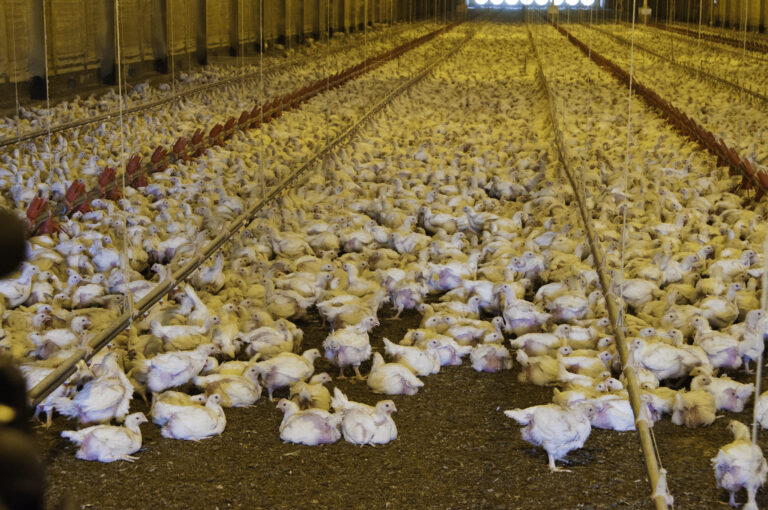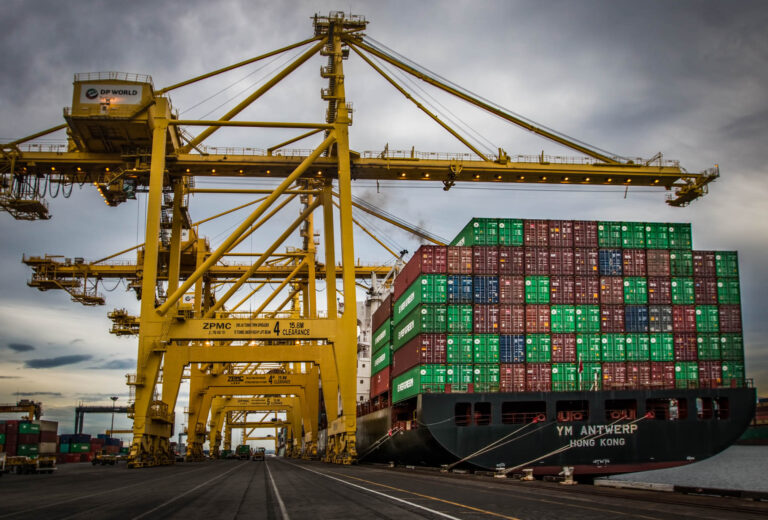
Sharon Block is a Professor of Practice and the Executive Director of the Center for Labor and a Just Economy at Harvard Law School.
Low-wage workers in the United States face a great deal of precarity in 2022 as a general matter — and the Supreme Court’s overruling of Roe v. Wade last week has increased that precarity for millions. The degree of that precarity varies greatly depending in which state a worker lives. In regions of the U.S. that precarity is mitigated in part by a minimum wage sufficient to lift full-time workers above the federal poverty line, access to state-mandated paid sick or family leave and union density sufficient to have at least some ability to produce higher living standards either directly through collective bargaining agreements for a significant portion of the population or indirectly through the exercise of political power in the form of union-supported pro-worker laws. In other regions of the U.S., none of these hedges against precarity exist – employers are free to pay a sub-poverty minimum wage and deny paid leave even when workers’ lives or the lives of their family members depend on it and where unions have little or no presence in the workplace or the state house.
As can be seen in the charts below, these constellations of precarity-inducing or -mitigating conditions tend to occur together. The states with the lowest union density generally have the lowest possible minimum wage, no state-mandated paid sick or family leave and have poverty rates above the national average. Conversely, states with the highest union density generally have among the highest minimum wage levels in the country, ensure access to paid sick or family leave and have lower-than-average poverty rates.
While there are some exceptions — Arkansas has a relatively high minimum wage, Utah has a low poverty rate, Hawaii has a relatively low minimum wage until October 2022 and New York has a high poverty rate — the overall pattern holds. Importantly, no state with low union density has a combination of a family-sustaining minimum wage and guaranteed paid leave and no state with high union density has a combination of a low minimum wage and no guaranteed paid leave. Put simply, the presence of unions in a state correlates with low-wage workers being economically better able to care for themselves and their families.
| States with the lowest union density | Union density (2021) | Minimum wage (2022) | Paid sick or family leave | Above or below national average of population living below poverty line (11.2%) |
| South Carolina | 1.7 | $7.25 | N | Above (13.7%) |
| North Carolina | 2.6 | $7.25 | N | Above (13.2%) |
| Utah | 3.5 | $7.25 | N | Below (7.2%) |
| Tennessee | 3.8 | $7.25 | N | Above (12.8%) |
| Arkansas | 3.9 | $11.00 | N | Above (14.7%) |
| States with highest union density | Union density | Minimum wage | Paid sick or family leave | Above or below national average of population living below poverty line (11.2%) |
| Hawaii | 22.4 | $10.10 (on the way to $12 by October and $18 by 2028) | Y | Below (9.5%) |
| New York | 22.2 | $13.20-$15 (on the way to $15 across the state) | Y | Above (11.8%) |
| Washington | 19.0 | $14.49 | Y | Below (7.9%) |
| Oregon | 17.8 | $12.75 (going up to $13.50 on 7/1/22 and then indexed) | Y | Below (9.1%) |
| New Jersey | 16.2 | $13.00 (on the way to $15 by 2024) | Y | Below (7.6%) |
So, what do these statistics have to do with the Supreme Court’s decision last week to reverse Roe v. Wade? The Supreme Court’s decision in Dobbs v. Jackson Women’s Health Organization dramatically exacerbated another dividing line our country — access to abortion services. This cleavage in our nation runs along almost exactly the same fault line as the economic one. As shown in the expanded charts below, every one of the states with the lowest union density except for one (North Carolina) now also will ban or greatly restrict access to abortion and all of the states with the highest union density will continue to protect a women’s right to choose.
| States with the lowest union density | Union density | Minimum wage | Paid sick or family leave | Above or below national average of population living below poverty line (11.4%) | Abortion banned or significantly restricted |
| South Carolina | 1.7 | $7.25 | N | Above (14.2%) | Y |
| North Carolina | 2.6 | $7.25 | N | Above (13.2%) | N |
| Utah | 3.5 | $7.25 | N | Below (7.4%) | Y |
| Tennessee | 3.8 | $7.25 | N | Above (13.1%) | Y |
| Arkansas | 3.9 | $11.00 | N | Above (14.1%) | Y |
| States with highest union density | Union density | Minimum wage | Paid sick or family leave | Above or below national average of population living below poverty line (11.4%) | Abortion banned or significantly restricted |
| Hawaii | 22.4 | $10.10 (on the way to $12 by October and $18 by 2028) | Y | Below (9.7%) | N |
| New York | 22.2 | $13.20 – $15 (on the way to $15 across the state) | Y | Above (12.1%) | N |
| Washington | 19.0 | $14.49 | Y | Below (7.6%) | N |
| Oregon | 17.8 | $13.50 (on the way to $14.75 by 2023 and then indexed) | Y | Below (8.8%) | N |
| New Jersey | 16.2 | $13.00 (on the way to $15 by 2024) | Y | Below (10%) | N |
The confluence of these fault lines yields two important insights. The first is that it is clear that women in states with the lowest union density are likely to suffer the most in post-Roe America. This is because they will be denied access to abortion services in their own states and they are among the least likely to be able to travel to get abortion services where such services are still legal. They won’t be able to travel because they can’t afford the costs of travel or because they can’t afford to miss work since they are unlikely to have paid leave. That means that they will be more likely to bear children as a result of an unintended pregnancy. But they face tremendous challenges in having the resources to take leave from work to care for a newborn or to be able to raise a child. Thus, the overlap of these two dimensions will exacerbate the tragedy of poverty that already exists for these women and their children.
The second important insight is that unionization can be a tool to mitigate the impact of Dobbs. In the short term, women who have union representation can bargain for paid leave and travel expenses if they need to get an abortion. Workers with collective bargaining agreements are significantly more likely to have access to paid sick leave than those who don’t. They also can bargain for maternity leave and other family supports if they choose to have a child. In the long term, raising union density builds power so that workers in low-wage, abortion-denying regions of America can change their states’ laws to raise living standards and even reverse post-Roe abortion bans and restrictions.
I’m not naïve — building union density in the Southern states where union density is now the lowest is not an easy or short-term project. But in the face of Dobbs, it has taken on a new saliency and urgency. Now, millions of women’s lives depend on a strong labor movement in all of America.






Daily News & Commentary
Start your day with our roundup of the latest labor developments. See all
December 12
OH vetoes bill weakening child labor protections; UT repeals public-sector bargaining ban; SCOTUS takes up case on post-arbitration award jurisdiction
December 11
House forces a vote on the “Protect America’s Workforce Act;” arguments on Trump’s executive order nullifying collective bargaining rights; and Penn State file a petition to form a union.
December 8
Private payrolls fall; NYC Council overrides mayoral veto on pay data; workers sue Starbucks.
December 7
Philadelphia transit workers indicate that a strike is imminent; a federal judge temporarily blocks State Department layoffs; and Virginia lawmakers consider legislation to repeal the state’s “right to work” law.
December 5
Netflix set to acquire Warner Bros., Gen Z men are the most pro-union generation in history, and lawmakers introduce the “No Robot Bosses Act.”
December 4
Unionized journalists win arbitration concerning AI, Starbucks challenges two NLRB rulings in the Fifth Circuit, and Philadelphia transit workers resume contract negotiations.